Hazardous Indoor Plants and Your Pet
Posted: 02/10/2023 | BY: Erin Cain | Categories: Cat , Dog , Pet care
Whether you keep plants indoors to brighten your environment or you enjoy the sights and smells of a colorful garden outside, you know the numerous benefits that plants provide to people. Unfortunately, many plants are not so beneficial to our dogs and cats. When you bring plants into your home, you want to know that they will not pose a threat to your furkids. You can keep your pets safe by learning all about hazardous indoor plants and your pet.
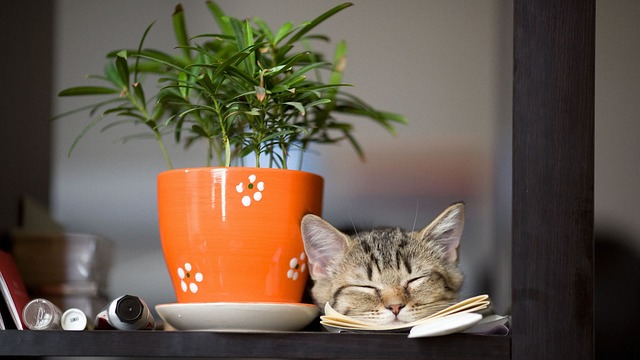
Indoor Plant Hazards
Many common houseplants or plants brought in from outdoors for display can be dangerous to cats and dogs. Here are some commonly seen plants that can pose a danger to your pet:
Aloe Vera
Aloe vera is one of the most common and recognizable houseplants; the gel from this plant has long been used for its skin-soothing properties. Unfortunately, aloe vera is also toxic to cats and dogs. A key component of aloe vera is anthraquinone glycosides, which is a purgative that prompts bowel movements. If your pet ingests aloe vera, they may experience these side effects:
- diarrhea
- vomiting
- anorexia
- depression and lethargy
- changes in urine color
- tremors (rare)
If you have an aloe vera plant in your home, place it up high where your pets can’t access it.
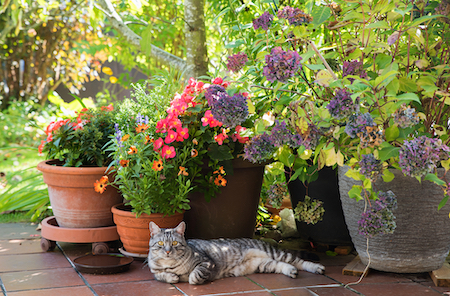
Begonia
The begonia is a brightly colored perennial that is popular as both an indoor and outdoor plant. It contains soluble calcium oxalate crystals, and when the plant is ingested, these crystals enter the bloodstream, combine with calcium, and impact the kidneys. Generally, the plant’s tubers are the most toxic. Pets who eat begonias may experience:
- drooling
- vomiting
- lethargy
- diarrhea
- facial rubbing
- oral irritation
- intense burning in the mouth, lips, and tongue
- weakness
- muscle tremors
- seizures
The begonia is a beautiful flower, but it does need to be kept away from your dog or cat.
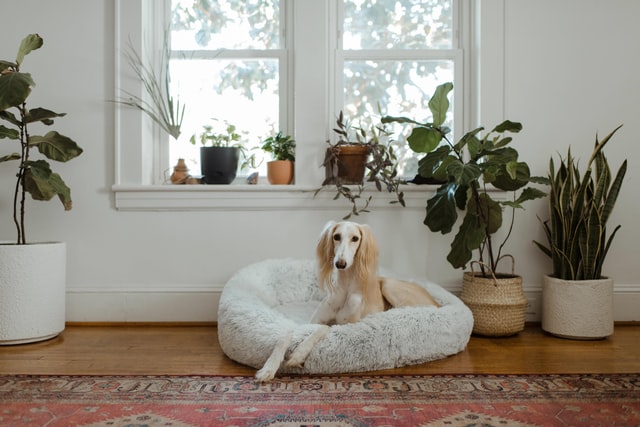
Lilies
There are a wide variety of lilies, and as beautiful as they are, they are all incredibly toxic to cats. While the toxin responsible for this toxicity is unknown, what is known is what happens to a cat who eats part of a flower petal or leaf, drinks water from the vase, or licks the pollen. In as little as 24-hours, a cat can experience kidney failure, leading to death. Here are the symptoms for cats who have eaten a part of a lily:
- lethargy
- drooling
- dehydration
- increased urination
- loss of appetite
- difficulty swallowing
- kidney failure
Early veterinary treatment is the only method to improve a cat’s prognosis. If you think or suspect your cat has eaten any part of a lily, call your veterinarian immediately.
Interestingly, dogs are not impacted by lilies like cats are. For dogs, eating a lily will result in minor stomach upset. Whether you have a dog or cat, your best bet is to keep lilies outside your home.
Philodendron
While the philodendron is a long-standing favorite amongst indoor plants, it does need to be kept far away from your pets. Philodendron contains insoluble calcium oxalate crystals, the same component found in human kidney stones. When a dog or cat bites or chews on a philodendron, those sharp crystals sink into the pet’s mouth and penetrate the tissue like a series of tiny needles. This action results in:
- pain and swelling in the mouth, lips, and tongue
- stomach pain
- difficulty swallowing
- vomiting
- excessive drooling
In rare circumstances, obstruction of the esophagus may occur. While the philodendron might not be as dangerous as the lily, it’s best to contact your veterinarian right away if your pet has eaten from it.
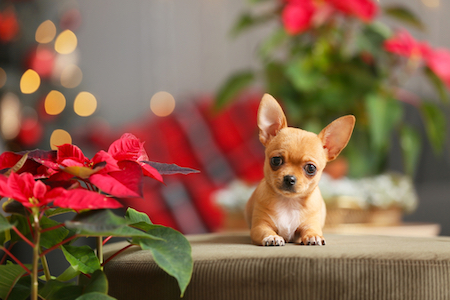
Poinsettia
The poinsettia is a favorite indoor plant during the Christmas season. It can be found in red, white, and pink colors. This plant has long been considered highly toxic to dogs and cats, but the good news is that research shows poinsettias are unlikely to lead to a pet’s death. However, that doesn’t mean letting your pet chow down on this plant. Ingestion of the poinsettia’s white sap can cause the following:
- excessive drooling
- vomiting
- diarrhea
So feel free to celebrate with this plant over the holidays, but do your best to encourage your pets to stay clear of it.
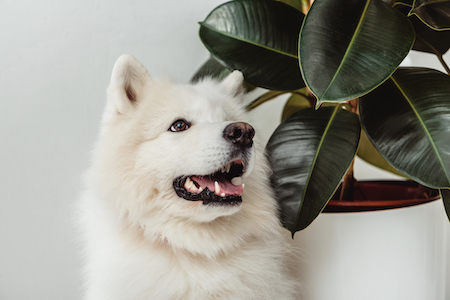
Pet insurance can help when your pet has eaten a toxic plant.
All pet parents who own dogs or cats know that pets tend to taste test the items that make up their world. Sometimes, as hard as we try, our dog or cat gets into something that may cause them significant health problems. That’s when a pet insurance policy can help cover much of the costs associated with an emergency trip to the veterinarians, any necessary hospitalization, and medication. Get a free pet insurance quote today through Pet Insurance Review, and make sure you and your pet are covered if an accident happens.
References:
- Pet Poison Helpline. (2021). Aloe Vera. Retrieved from https://www.petpoisonhelpline.com/poison/aloe-vera/
- Freed, E. (n.d.). Toxic plants. Retrieved from https://www.isvma.orghttps://media.petinsurancereview.com/2019/10/ISVMAToxicPlants.pdf
- U.S. Drug & Food Administration. (2019). Lovely Lilies and Curious Cats: A Dangerous Combination. Retrieved from https://www.fda.gov/animal-veterinary/animal-health-literacy/lovely-lilies-and-curious-cats-dangerous-combination
- Darling, S. (2019). Are Philodendrons Poisonous To Cats & Dogs? Retrieved from https://www.cuteness.com/13722714/are-philodendrons-poisonous-to-cats-and-dogs
- Chewy Editorial. (2020). Are Poinsettias Poisonous to Dogs and Cats? Retrieved from https://be.chewy.com/pet-holiday-hazards-poisonous-plants-for-cats-and-dogs/
Disclaimer
The information contained on this blog is intended for informational and educational purposes only and should not be construed as medical advice. It is not a substitute for professional veterinary care. Always consult with your veterinarian before making any changes to your pet's health care or treatment plan.
The authors of this blog are not veterinarians and do not claim to be experts in pet health. The information provided here is based on our own experiences and research, as well as information from reputable sources. However, we cannot guarantee the accuracy or completeness of this information.
We encourage you to do your own research and consult with your veterinarian before making any decisions about your pet's health.
Previous post
How to Treat Insect Bites on Your PetNext post
Outdoor Plant Hazards for PetsCompare top pet insurance providers & plans.
Enter your dog’s age in years and months to calculate their age equivalent to human years.
Calculate your dog’s ageEnter your cat’s age in years and months to calculate their age equivalent to human years.
Calculate your cat’s age